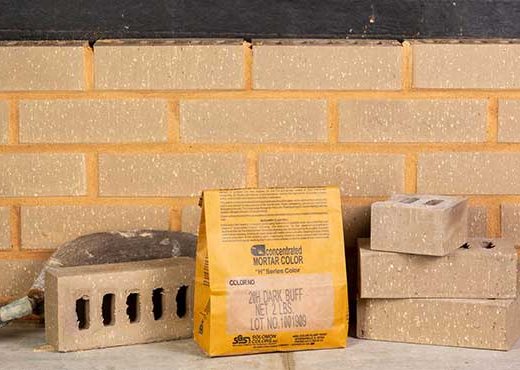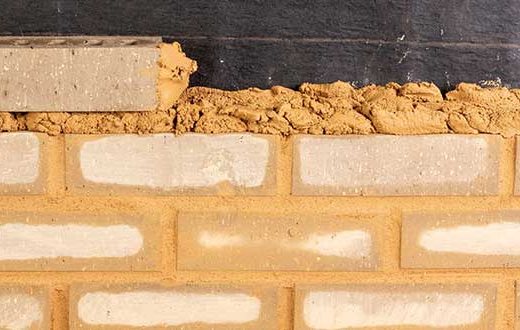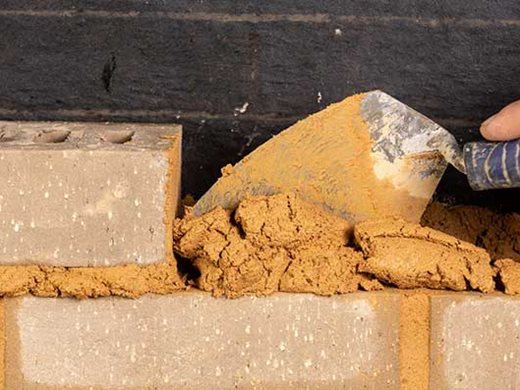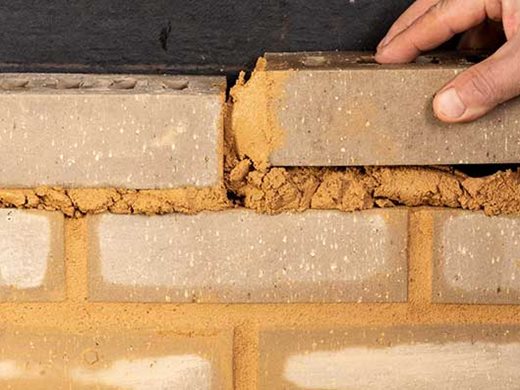Booth S11215
In most masonry walls, mortar makes up between 7% and 20% of the visible surface. That is no small amount! By coloring mortar, architects and masons have a significant opportunity to affect the appearance of masonry without drastically changing the design. Even a small detail like colored mortar creates a fundamentally different look. Contrasting or complimentary mortar color turn a simple masonry wall into a visual centerpiece.
All mortar ingredients affect color. For example, gray cement will make the final color darker. White cement will create a lighter or pastel color. Different regional sands will give a slight hue to the mortar color. Increasing water content will blush or lighten color. Naturally, mortar color will add a strong hue to the mortar. Each of these factors works together to create the final color.
Color perception is also important. Everything around the mortar affects how the color is seen. Brick color will change how the eye perceives mortar color. Joint spacing and tooling styles will also affect how color is seen and how it is affected by other factors.


Blend:
Choosing a mortar color that closely matches the brick creates a uniform appearance. Combine this with a flush joint for an even more consistent look. This combination is especially popular with interior walls made from colored concrete blocks (formally known as concrete masonry units). Matching mortar color with the masonry unit creates an appearance similar to a colored concrete wall. Using a raked joint with a matching mortar color creates a "floating" brick appearance.
Compliment:
Choosing a complimentary mortar color creates a contemporary appearance. Complimentary colors are a great way to introduce more hues without creating a jarring or contrasting color combination. Due to the color ranges possible with masonry and mortar, picking a true complimentary color may be difficult. But that doesn't mean you can't pick a color that works well with your masonry units. This is where mock ups and the Mortar Color App come in handy.
Contrast:
This daring strategy can pay huge dividends with a modern, avante garde product. The classic contrasting design schemes use a very dark brick with a light mortar or a light brick with a dark mortar. The stronger contrast you can achieve, the more striking the results. For example, dark chocolate brown bricks would contrast nicely with with a light buff like SGS 10X with white mortar.


SGS Concentrated Mortar Colors are designed for convenient and user friendly mixing. Pre-weighted units of mortar color can easily be mixed with most standard mortars for reliable and consistent coloring. SGS Concentrated Mortar Colors are compatible with Type N mortar, Type M mortar, Type S mortar, and Type O mortar. Solomon Colors mortar color comes with convenient dosing charts for common premixed mortars and non-premixed mortars.
The procedure for adding mortar color is simple. Start by adding 3/4 the total water and 1/3 the total sand to a mechanical mortar mixer. Add the cement and lime or the premixed mortar. Add the appropriate number of A, H, or X Series units based on the loading chart. Add the remainder of water and sand, mixing for five minutes, until the mortar and color is uniformly mixed. Place masonry units with colored mortar using best practices. Avoid over-tooling, tooling too early, and water exposure. Any of these can affect the final color.
Properly planned and installed, colored mortar drastically improves masonry installations. Making mortar into a design feature increases the mason's options and abilities without significantly adding to the necessary labor. The addition of mortar color on traditional brick or concrete block masonry is a virtual no-brainer.
Explore impressive concrete installations to find inspiration for your next project.
Find out how much color and fiber you'll need for any size project.